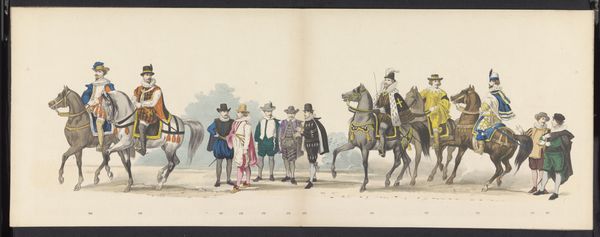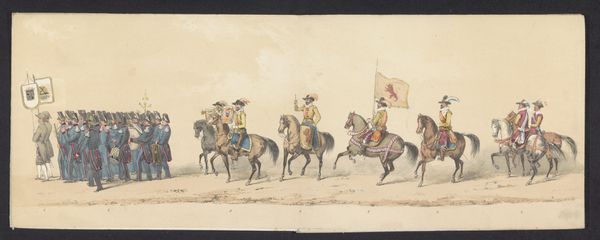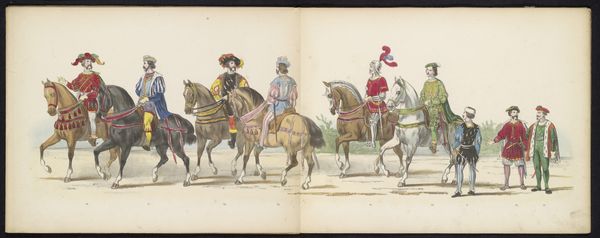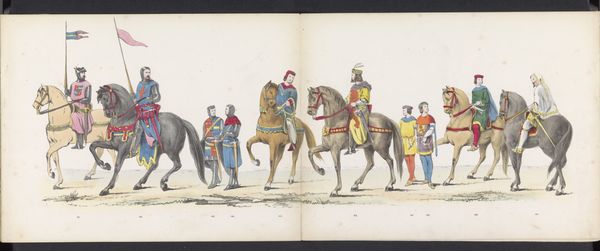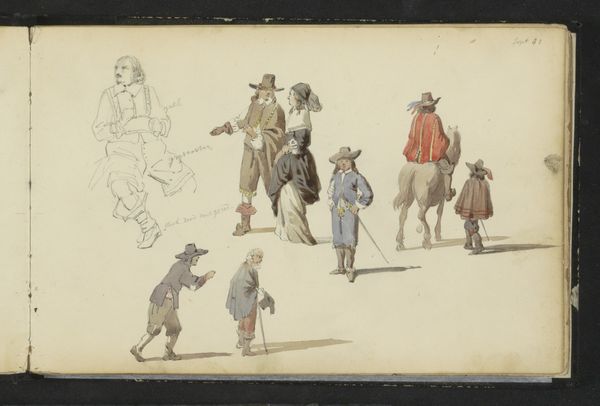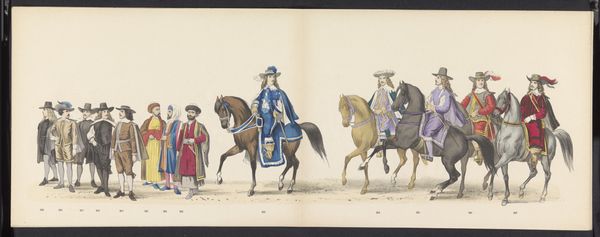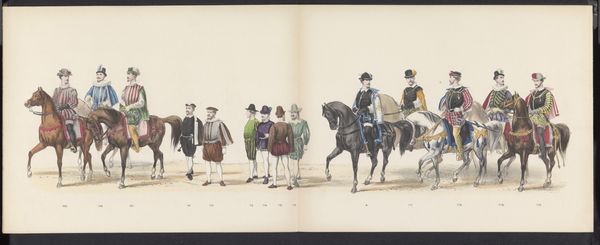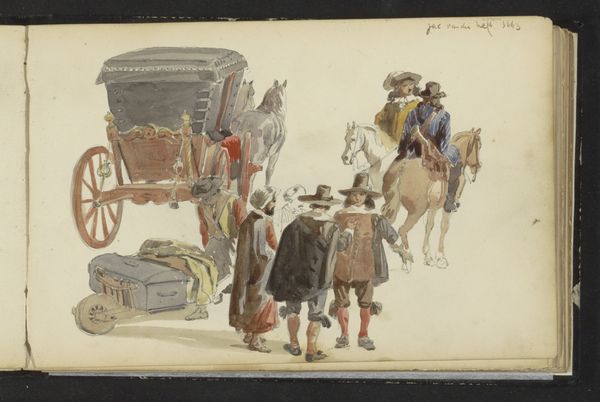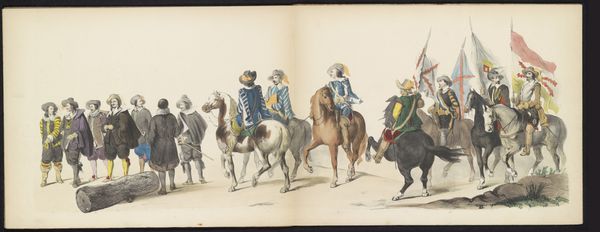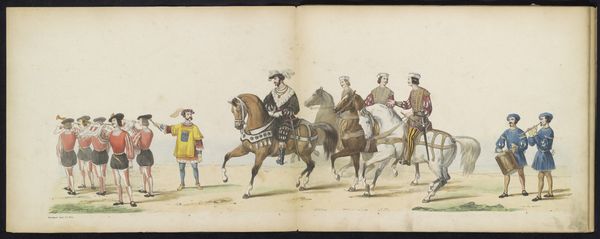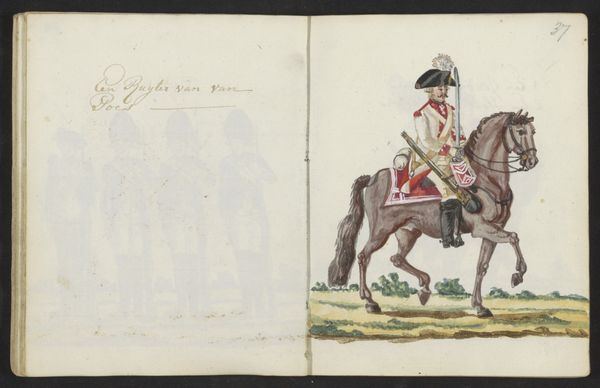
drawing, painting, paper, watercolor
#
portrait
#
drawing
#
dutch-golden-age
#
painting
#
figuration
#
paper
#
watercolor
#
coloured pencil
#
genre-painting
#
mixed media
#
watercolor
Copyright: Rijks Museum: Open Domain
Editor: This is "Figuren in zeventiende-eeuwse kleding," or Figures in Seventeenth Century Clothing, by Cornelis Springer, created sometime between 1846 and 1882. It's a watercolor on paper currently held at the Rijksmuseum. I find it charming, almost like a snapshot of a historical play. How do you interpret this work? Curator: What strikes me are the costumes, echoing a romanticized past. Springer is revisiting the Dutch Golden Age, but not necessarily to represent history accurately. Instead, it evokes a sense of nostalgia and perhaps even a longing for a simpler, more ordered world. What sort of narrative do you see playing out? Editor: It's like different social classes are on display; a military figure pointing towards some action or place; some merchants in conversation; two men dressed luxuriously along with a young child, maybe ready for festivities? It’s like scenes of civic life frozen on one page. Curator: Precisely. The artist invites us to see the past as a tableau of characters and recognizable tropes. Consider the presence of that mounted figure gesturing outwards – does that remind you of anyone, symbolically speaking? Who did the horsemen traditionally represent in the Dutch Golden Age, symbolically speaking? Editor: A call to action? Someone trying to give guidance or trying to claim a territory? I'd have to reflect on it further, to be honest. Curator: And that’s where the charm resides; the enduring allure of archetypes, continually reinterpreted through different eras. These figures transcend time. Editor: Absolutely, there’s an almost timeless quality. Seeing it this way, beyond the picturesque element, it has broadened my appreciation. Thank you. Curator: My pleasure. Looking at the symbolism helps us better grasp how history and art become intertwined.
Comments
No comments
Be the first to comment and join the conversation on the ultimate creative platform.
